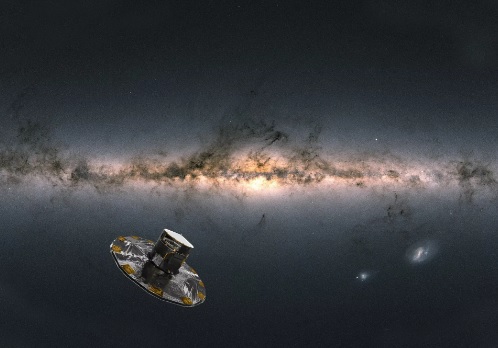for every
Southern newsroom
| June 18 2022

The phenomena we see in thousands of stars involve motions on the surface of each star. (Photo: ESA/Gaia/DPAC)
The European Space Agency (ESA) Gaia mission has released its third set of data from the project that seeks to develop the most complete map of the Milky Way. Among the highlights revealed was the discovery of “earthquakes” in thousands of stars in our galaxy.
These phenomena are characterized by small movements on the surface of each star and are capable of changing the shapes of the stars. “The ‘Starquakes’ program teaches us a lot about the stars, particularly their inner workings. ESA mission member Connie Aerts comments in a statement that Gaia is opening a gold mine for the ‘star science’ of massive stars.
While the Space Foundation was not designed to detect these “earthquakes,” it has found vibrations even in stars that have rarely been seen before. The most recent theory says that these stars should not have tremors, but the discovery revealed just the opposite.
On the largest 3-D motion map of the Milky Way, the Gaia mission captured details of nearly two billion stars. These include information on chemical composition, temperature, colour, mass, age, and even the speed with which stars are approaching or moving away from Earth (radial velocity).
The mission’s astronomers also discovered the largest catalog of binary stars ever, as well as special subgroups of stars, such as those that change brightness over time. It was also possible to obtain data from thousands of objects in the Solar System, such as asteroids, moons, millions of galaxies and quasars outside the Milky Way.
Some of the stars discovered by Gaia contain more heavy metals than others. While some are of primordial matter, there are also stars like the Sun, made of material enriched by previous stellar generations.
“Our galaxy is a beautiful melting pot of stars,” compares Alejandra Recio Blanco, of the Observatoire de la Côte d’Azur, in France. For the specialist, who collaborated with the Gaia team, this diversity is very important, because it tells the story of the Milky Way.
Much of the information from the Gaia Space Observatory came from newly released data for spectroscopy, a technique in which starlight is broken down into its component colors, like a rainbow.
“By searching the entire sky with billions of stars over and over again, Gaia is forced to make discoveries that other dedicated missions will not miss,” says Timo Prosti, ESA’s Gaia project scientist. “This is one of its strengths and we can’t wait for the astronomy community to dig into our new data to discover more about our galaxy and its surroundings than we ever imagined.”
counting
all knowledge

“Coffee trailblazer. Social media ninja. Unapologetic web guru. Friendly music fan. Alcohol fanatic.”

